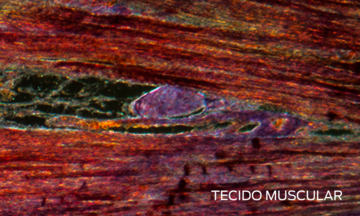Controle Do Peso Saudável

A obesidade em cães e gatos de estimação tem importância global.1-5
Em algumas populações, a prevalência de animais com sobrepeso e obesidade diagnosticados no consultório veterinário tem sido citada como até 65% em cães e até 63% em gatos.2,3
Entender, identificar e controlar o excesso de peso nos animais de estimação é vital para sua saúde. Estudos mostram que animais com sobrepeso ou obesidade não vivem tanto quanto animais mais magros.6-9 A obesidade também está associada a muitas doenças, incluindo osteoartrite e diabetes felino.10,11
No entanto, as pesquisas mostram que muitos tutores de animais de estimação não veem o peso do animal como um problema.3,12,13Pouco mais da metade dos tutores de animais de estimação relatou que seu veterinário regularmente começou a falar sobre o peso durante a consulta anual de seu animal de estimação.4 Isso cria uma lacuna crítica para lidar com os riscos de sobrepeso e obesidade na saúde dos animais.
Saiba mais sobre as ligações entre saúde e peso corporal em animais de estimação, e os riscos de excesso de peso sobre a saúde animal.

Explore áreas de controle do peso saudável
Saiba mais
- Bomberg, E., Birch, L., Endenburg, N., German, A. J., Neilson, J., Seligman, H., Takashima, G., & Day, M. J. (2017). The financial costs, behaviour and psychology of obesity: A one health analysis. Journal of Comparative Pathology, 156(4), 310–325.
- German, A. J., Woods, G. R. T., Holden, S. L., Brennan, L., & Burke, C. (2018). Dangerous trends in pet obesity. The Veterinary Record, 182(1), 25. doi: 10.1136/vr.k2
- Larsen, J. A., & Villaverde, C. (2016). Scope of the problem and perception by owners and veterinarians. Veterinary Clinics of North America: Small Animal Practice, 46, 761–772. doi: 10.1016/j.cvsm.2016.04.001
- Association for Pet Obesity Prevention. https://petobesityprevention.org/2018
- Ward, E., German, A. J., & Churchill, J. A. (n.d.). The global pet obesity initiative position statement. Retrieved October 14, 2021 from https://petobesityprevention.org/about/#GPOI
- Kealy, R. D., Lawler, D. F., Ballam, J. M., Mantz, S. L., Biery, D. N., Greeley, E. H., Lust, G., Segre, M., Smith, G. K., & Stowe, H. D. (2002). Effects of diet restriction on life span and age-related changes in dogs. Journal of the American Veterinary Medical Association, 220(9), 1315–1320.
- Penell, J. C., Morgan, D. M., Watson, P., Carmichael, S., & Adams, V. J. (2019). Body weight at 10 years of age and change in body composition between 8 and 10 years of age were related to survival in a longitudinal study of 39 Labrador retriever dogs. Acta Veterinaria Scandinavica, 61(1), 42.
- Salt, C., Morris, P. J., Wilson, D., Lund, E. M., & German, A. J. (2019). Association between life span and body condition in neutered client-owned dogs. Journal of Veterinary Internal Medicine, 33(1), 89–99.
- Teng, K. T., McGreevy, P. D., Toribio, J. L., Raubenheimer, D., Kendall, K., & Dhand, N. K. (2018). Strong associations of nine-point body condition scoring with survival and lifespan in cats. Journal of Feline Medicine and Surgery, 20(12), 1110–1118.
- German, A. J., Ryan, V. H., German, A. C., Wood, I. S., & Trayhurn, P. (2010). Obesity, its associated disorders and the role of inflammatory adipokines in companion animals. Veterinary Journal, 185(1), 4–9.
- Laflamme, D. P. (2012). Obesity in dogs and cats: What is wrong with being fat? Journal of Animal Science, 90, 1653–1662.
- Eastland-Jones, R. C., German, A. J., Holden, S. L., Biourge, V., & Pickavance, L. C. (2014). Owner misperception of canine body condition persists despite use of a body condition score chart. Journal of Nutritional Science, 3, e45.
- Colliard, L., Paragon, B.-M., Lemuet, B. Bénet, J.-J., & Blanchard, G. (2009). Prevalence and risk factors of obesity in an urban population of healthy cats. Journal of Feline Medicine and Surgery, 11, 135–140.



